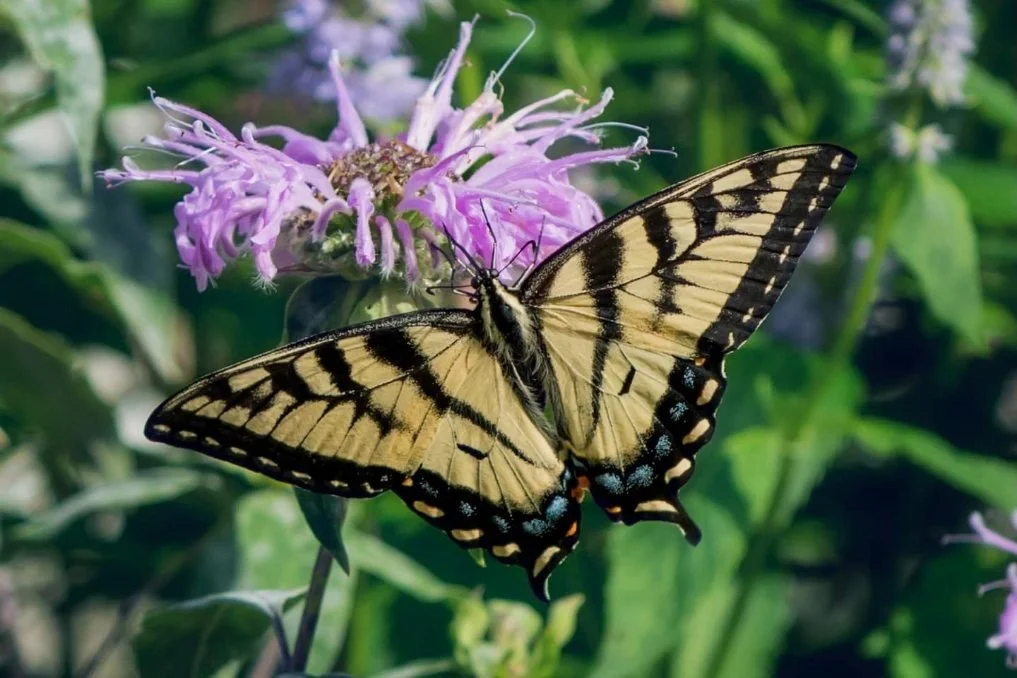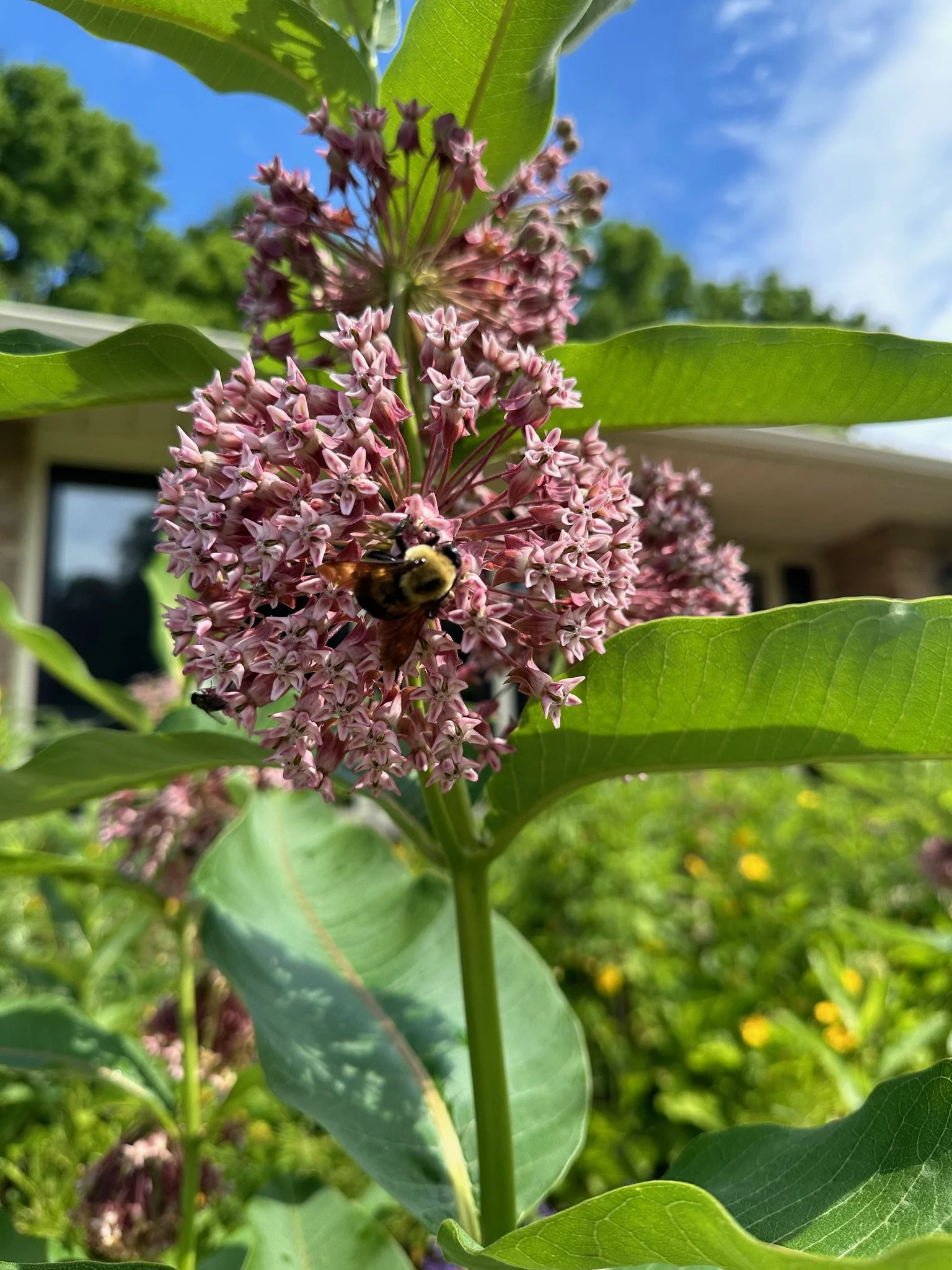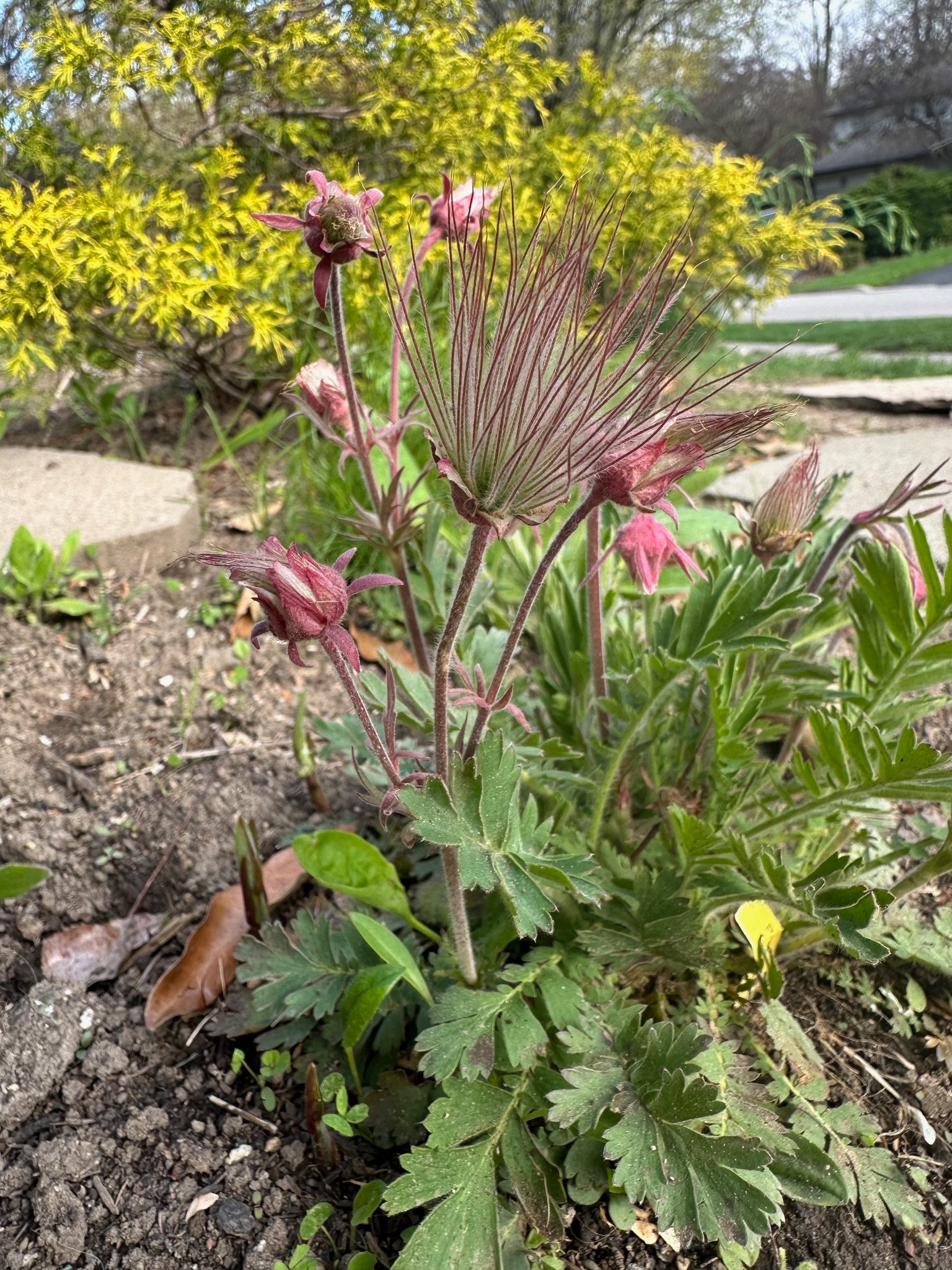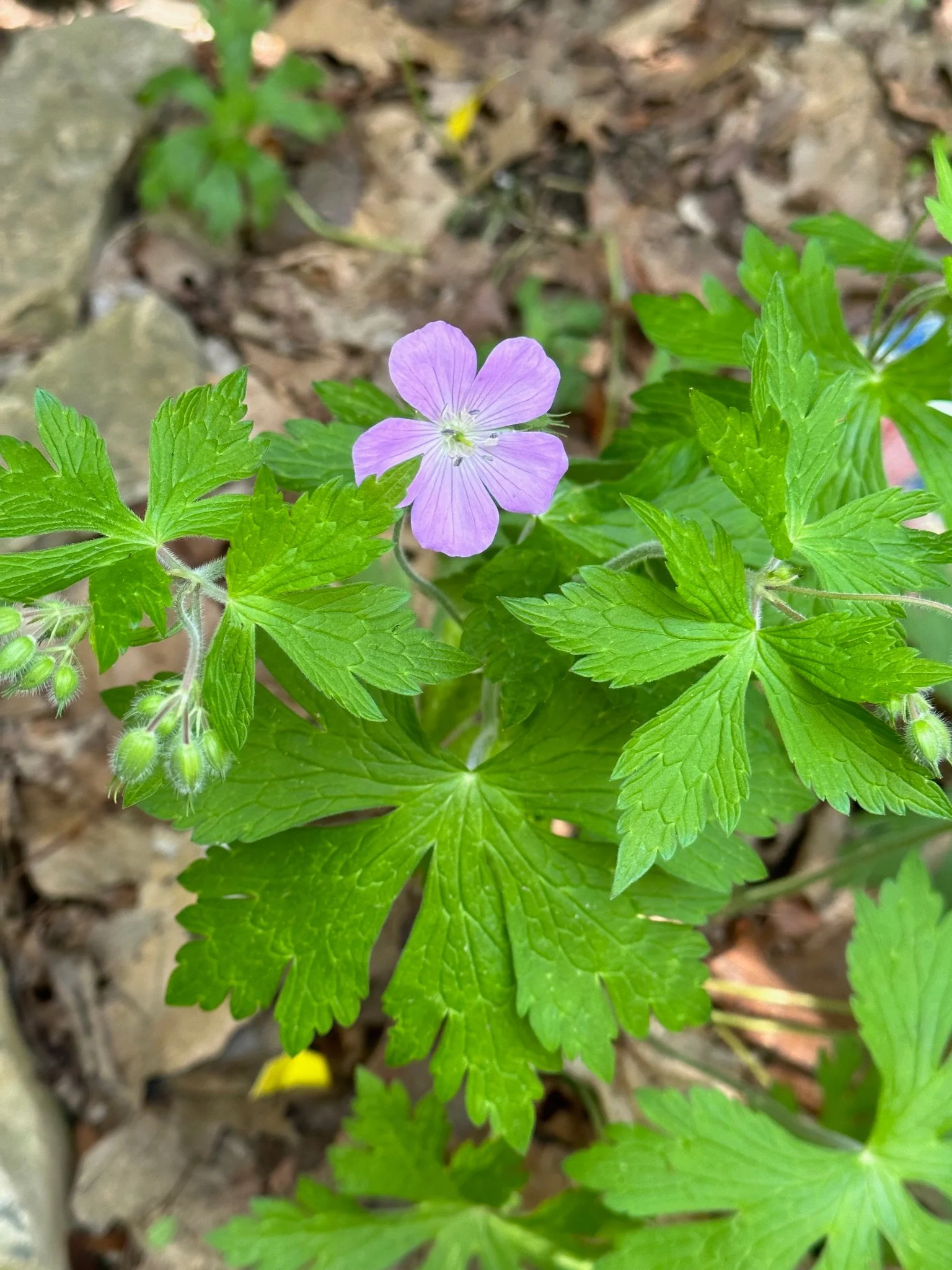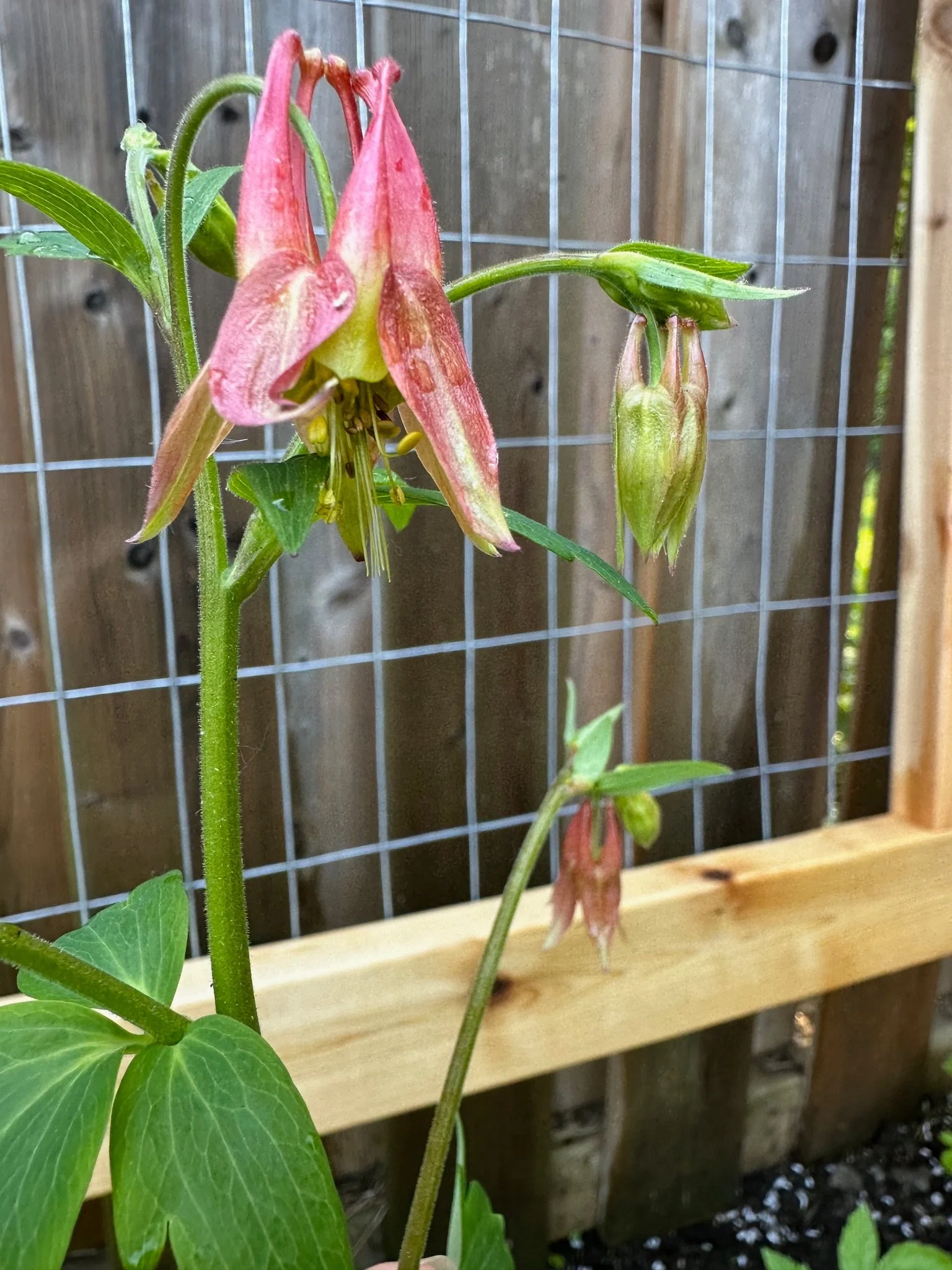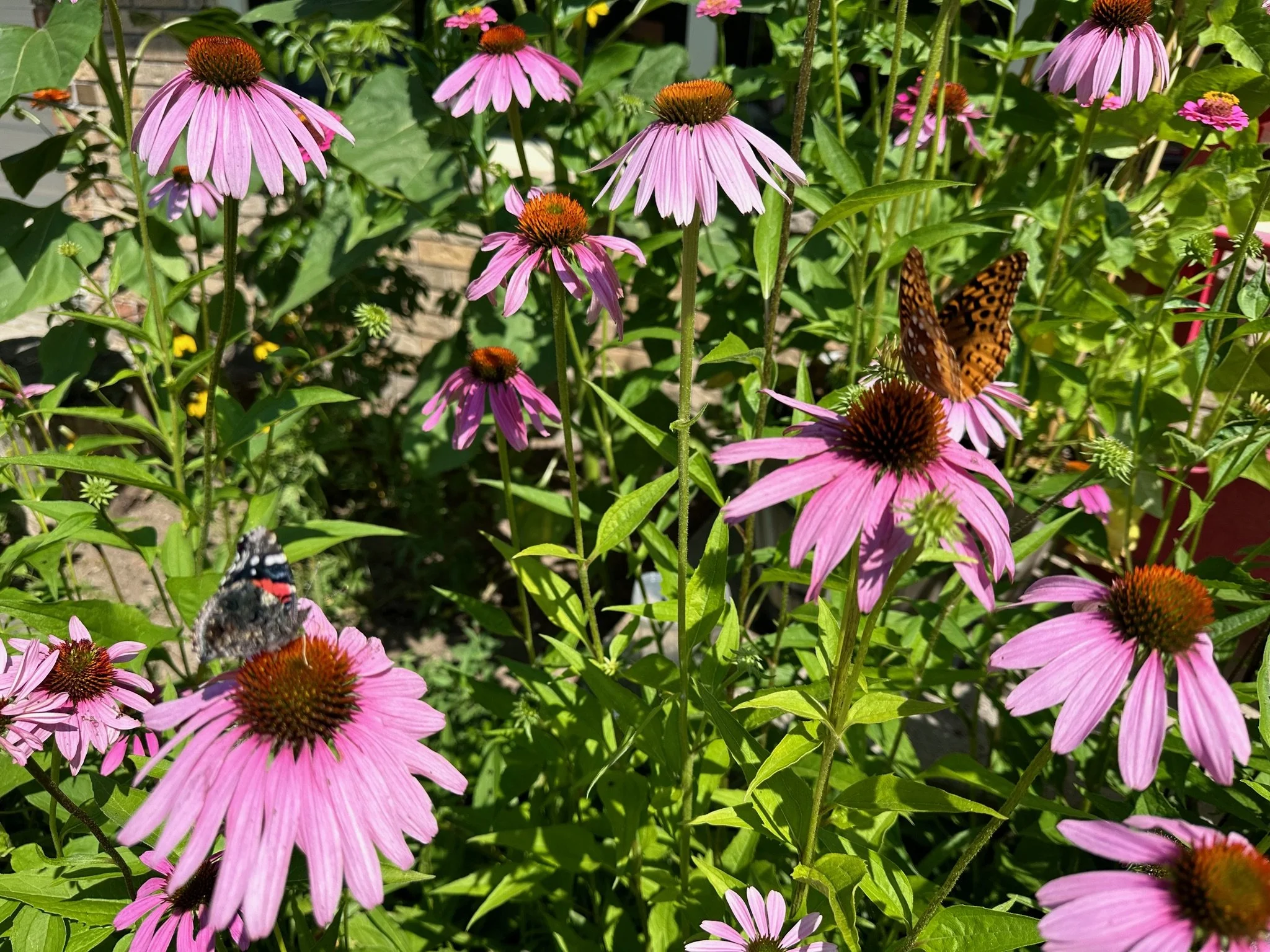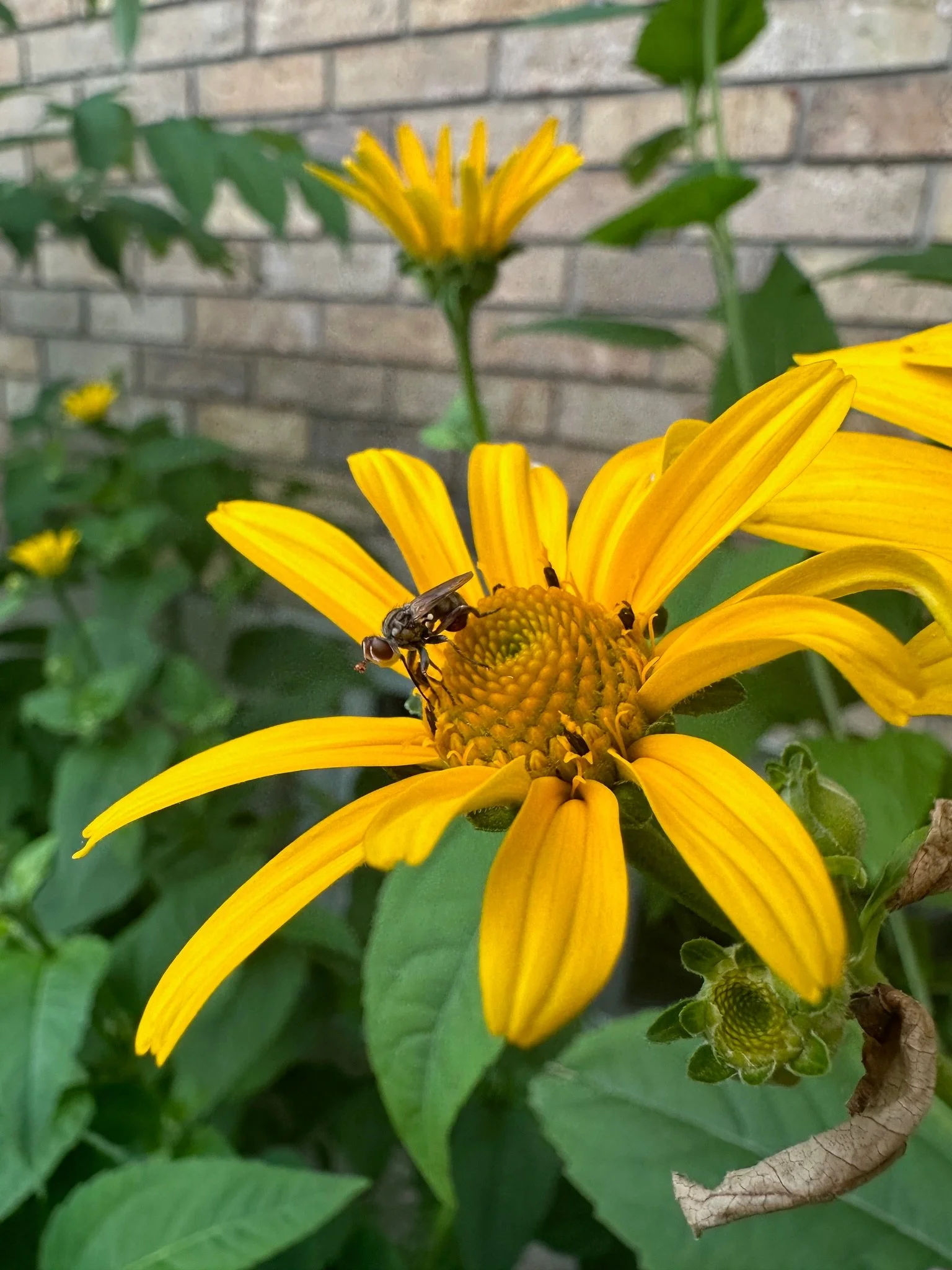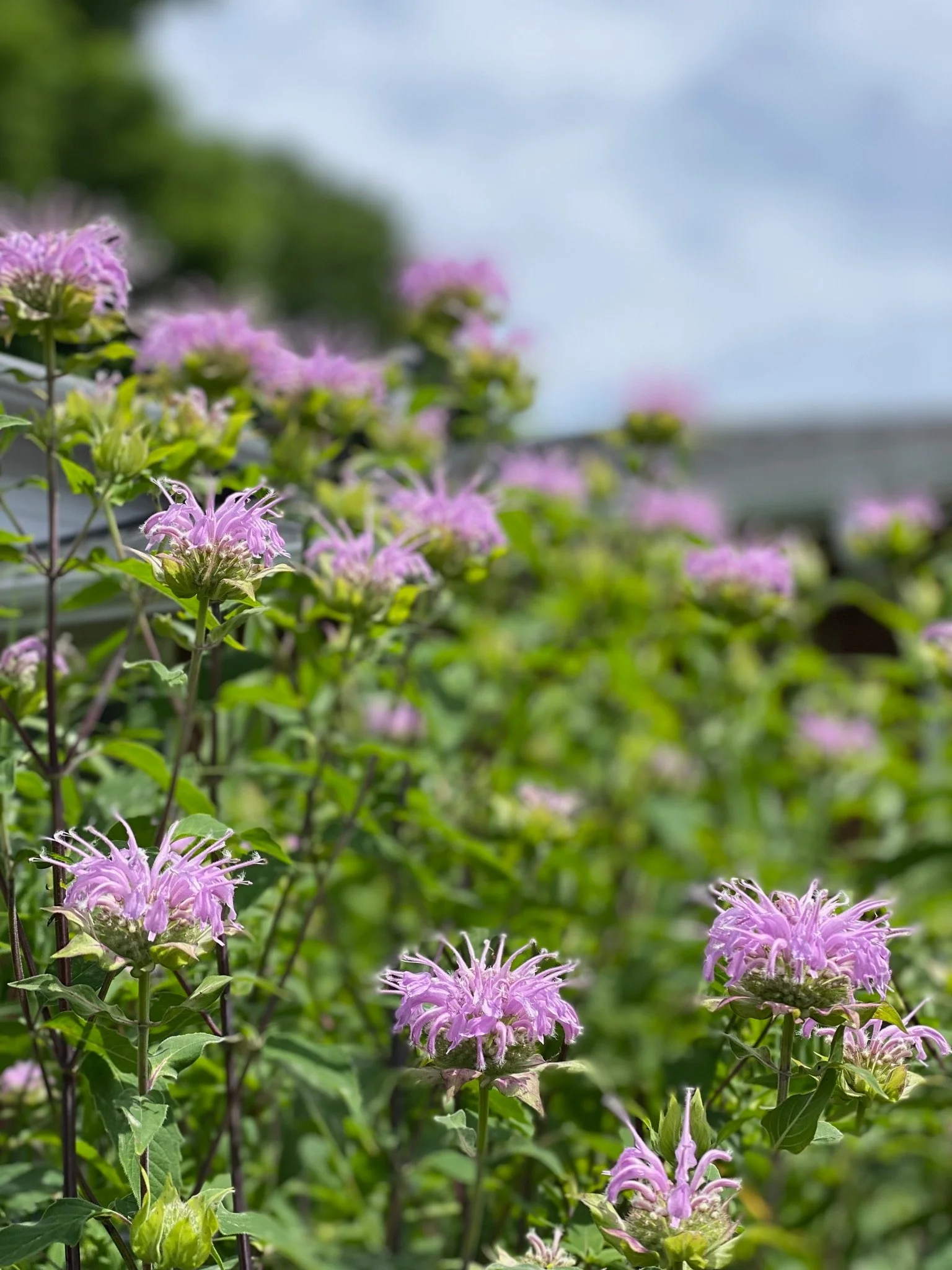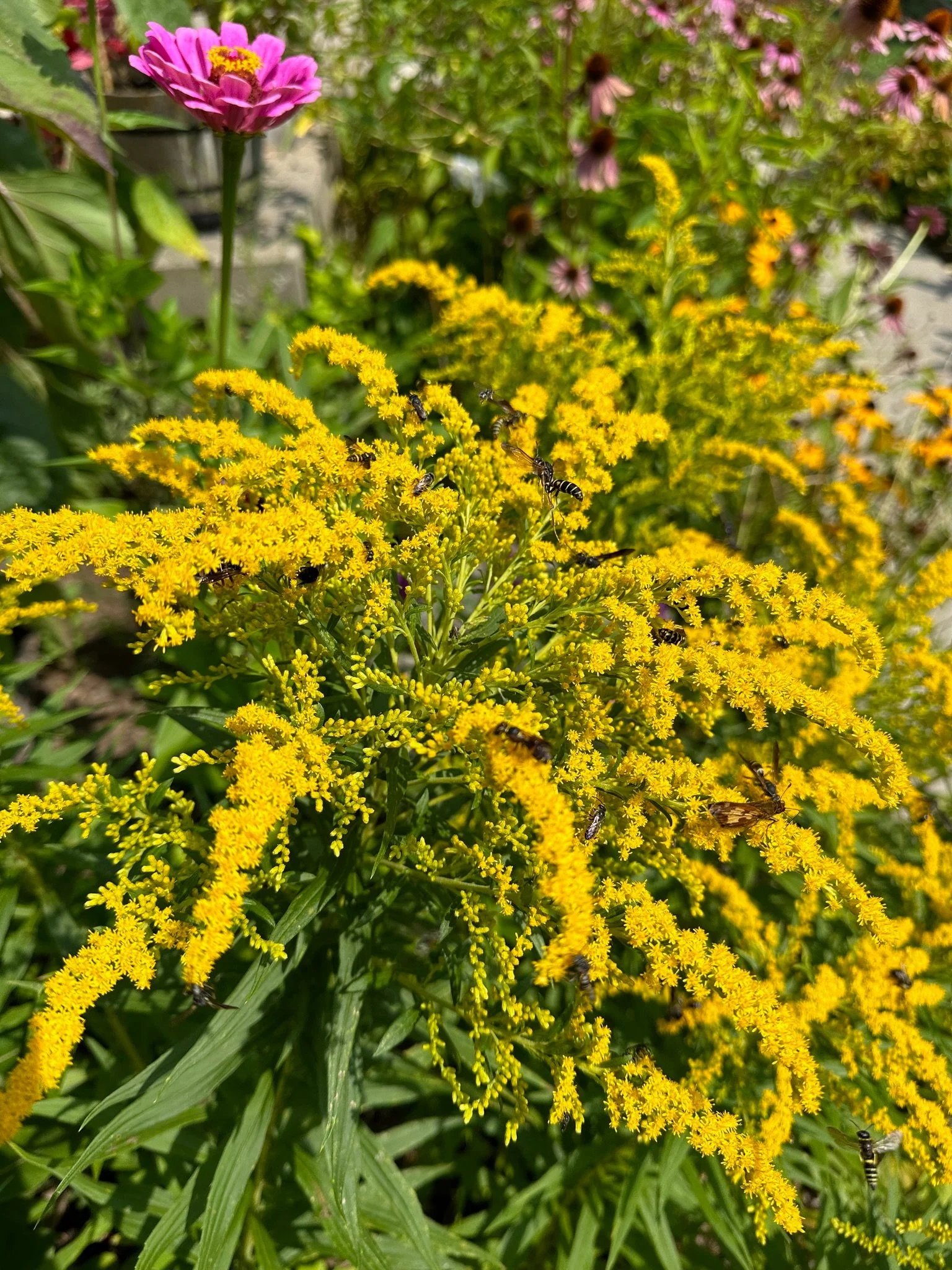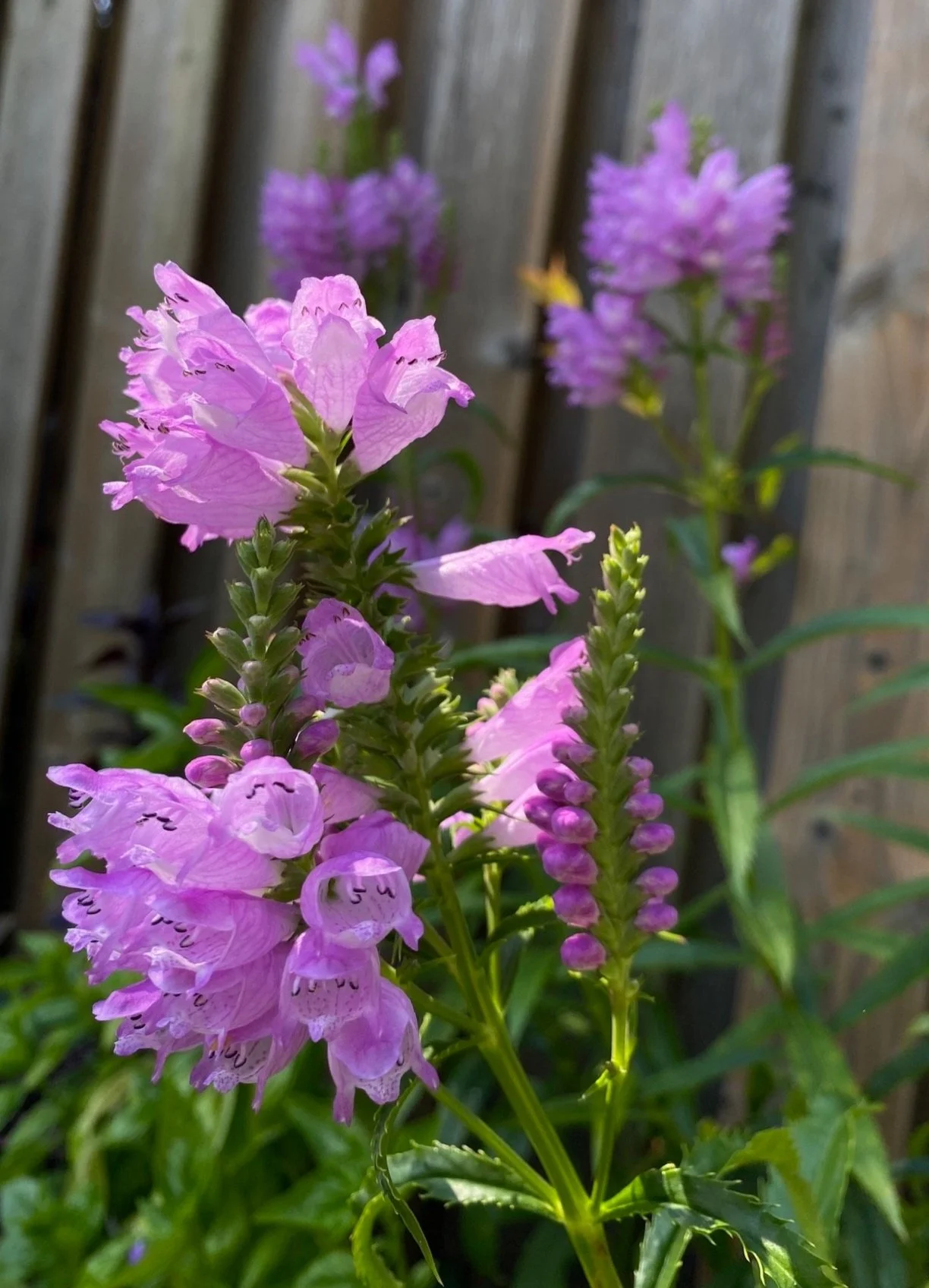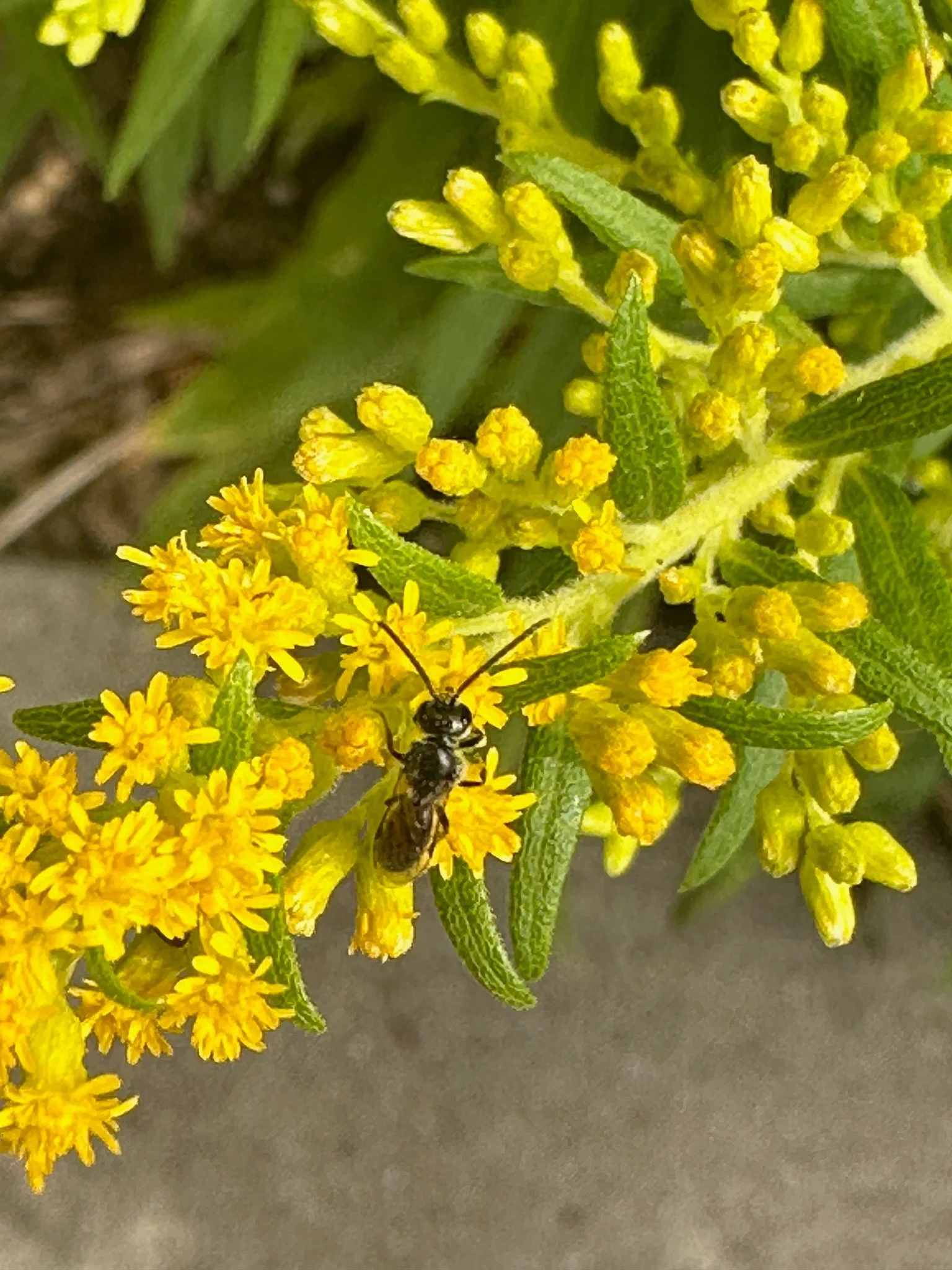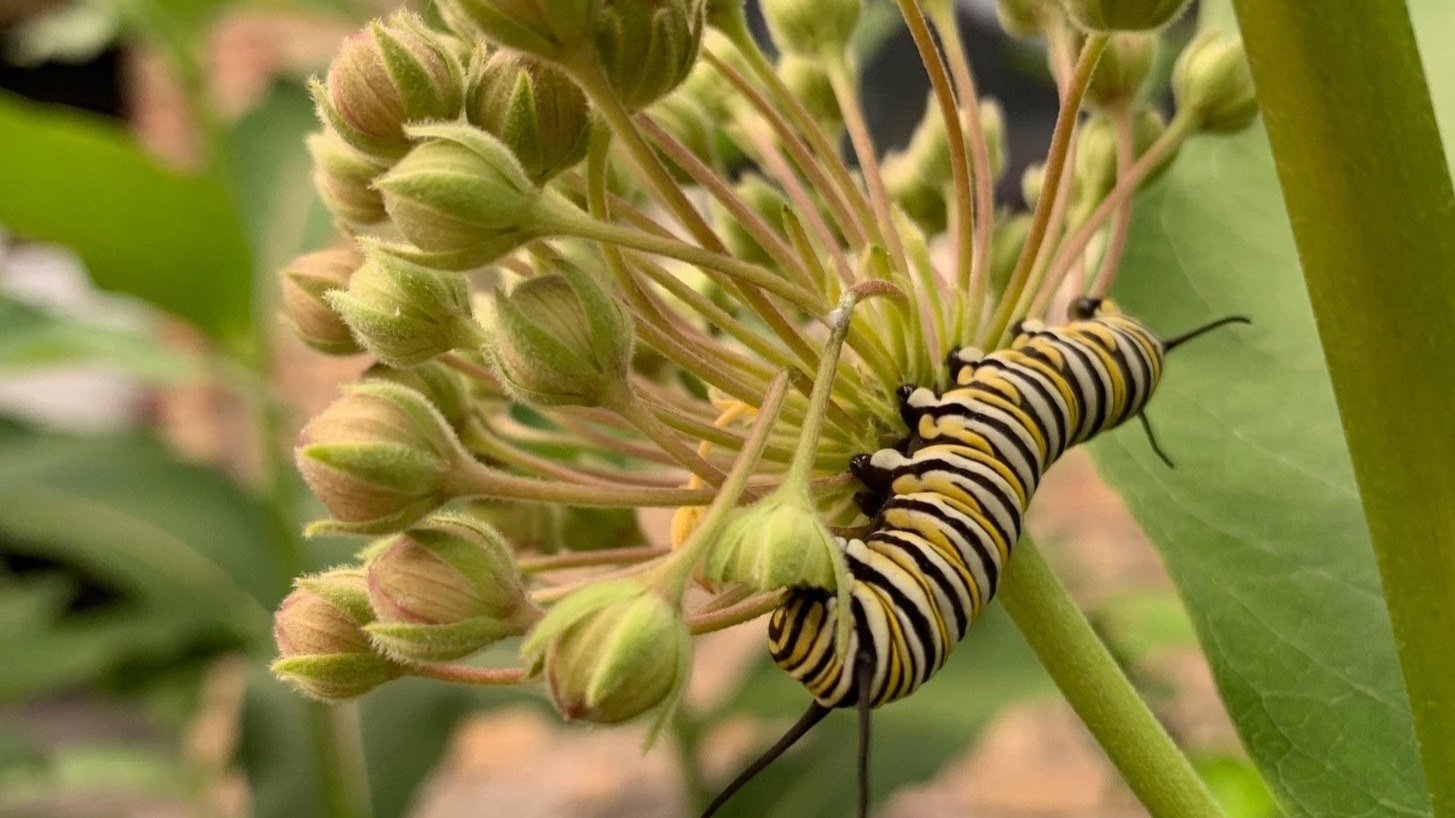Pollinator Garden
What is a Pollinator Garden?
A pollinator garden is a thoughtfully designed garden that provides food, shelter, and breeding areas for pollinators like bees, butterflies, hummingbirds, moths, and even some beetles. These gardens focus on plants that produce nectar and pollen, which are essential for the survival of pollinators and play a critical role in supporting biodiversity and healthy ecosystems.
Pollinator Gardens Typically Feature:
Native plants: Native flowers, shrubs, and trees that local pollinators are familiar with and naturally attracted to. These plants are well-adapted to the local environment, making them low-maintenance and beneficial for wildlife.
Diversity: A variety of plants with different bloom times throughout the growing season, ensuring pollinators have food year-round. This variety also creates visual appeal and supports a wider range of species.
Host plants: Specific plants where pollinators, like butterflies, can lay their eggs and where their larvae (caterpillars) can feed. These plants are critical for completing the life cycle of many pollinator species.
Water sources: Shallow dishes, puddles, or birdbaths to give pollinators access to water. Adding flat stones or partially submerged pebbles can provide safe landing spots for small insects.
Safe habitat: Spaces free from pesticides and chemicals, which can be harmful to pollinators. Instead, use natural pest control methods or companion planting to create a healthy garden ecosystem.
Overwintering sites: Areas where pollinators can safely hibernate or overwinter, such as fallen leaves, plant stems, or undisturbed patches of soil. Features like brush piles, logs, or evergreen shrubs also offer shelter during colder months.
Flowers
Spring Flowers
Lanceleaf Coreopsis (Coreopsis lanceolata)
Wild Columbine (Aquilegia canadensis)
Pasque Flower (Anemone patens)
Prairie Smoke (Geum triflorum)
Wild Geranium (Geranium maculatum)
Summer Flowers
Hairy Beardtongue (Penstemon hirsutus)
Purple Coneflower (Echinacea purpurea)
Pale Purple Coneflower (Echinacea pallida)
Prairie Blazing Star (Liatris pycnostachya)
Dense Blazing Star (Liatris spicata)
Cylindrical Blazing Star (Liatris cylindracea)
Smooth Oxeye (Heliopsis helianthoides)
Mountain Mint (Pycnanthemum virginianum)
Wild Bergamot (Monarda fistulosa)
Fall Flowers
New England Aster (Symphyotrichum novae-angliae)
Ironweed (Vernonia fasciculata)
Goldenrods (Solidago)
Smooth Blue Aster (Symphyotrichum laeve)
Obiedient Plant (Physostegia virginiana)
Host Plants
Flowers
Ontario's native flowers not only enhance garden beauty but also play a pivotal role in butterfly life cycles. They provide nectar for adults and essential food for caterpillars, ensuring these pollinators thrive.
Common Milkweed (Asclepias syriaca), Swamp Milkweed (Asclepias incarnata), and Butterfly Weed (Asclepias tuberosa): Famous for hosting the beloved Monarch Butterfly (Danaus plexippus), these vibrant plants are staples in any butterfly-friendly garden.
Black-eyed Susan (Rudbeckia hirta): A striking host plant for the Gorgone Checkerspot (Chlosyne gorgone), adding both colour and ecological value to your space.
Pearly Everlasting (Anaphalis margaritacea) and Pussytoes (Antennaria spp.): These hardy plants are the nurseries for Painted Lady Butterflies (Vanessa cardui). If caterpillars nibble your plants, fret not—they’ll recover beautifully!
Violets (Viola sororia & Viola nephrophylla): Essential for the Great Spangled Fritillary (Speyeria cybele). These butterflies are nighttime feeders, so provide plenty of foliage to create the perfect habitat for their daytime snooze.
Golden Alexander (Zizia aurea) and Yellow Pimpernell (Taenidia integerrima): Host plants for the striking Black Swallowtail (Papilio polyxenes). Growing these natives may just keep your dill safe!
False Nettle (Boehmeria cylindrica) and Wood Nettle (Laportea canadensis): The perfect hosts for the Red Admiral (Vanessa atalanta) and the curious Question Mark butterfly (Polygonia interrogationis).
Showy Tick Trefoil (Desmodium canadense): Not only does it fix nitrogen in the soil, but it also supports the Silver-spotted Skipper.
Wild Lupin (Lupinus perennis): A lifeline for the endangered Karner Blue (Lycaeides melissa samuelis), whose caterpillars depend entirely on this plant.
Grasses
Native grasses bring movement and texture to your garden while serving as larval host plants for skippers—a dynamic group of butterflies with swift and erratic flight patterns.
Little Bluestem (Schizachyrium scoparium): A drought-resistant marvel that supports various skippers, including the charming Peck’s Skipper.
Big Bluestem (Andropogon gerardii): Dubbed the "king of the prairie," this robust grass nourishes Delaware Skippers and their kin.
Switchgrass (Panicum virgatum): A garden staple hosting species like Leonard’s Skipper, this grass thrives in diverse conditions.
Indian Grass (Sorghastrum nutans): Tall and graceful, it’s a critical resource for Crossline Skippers and other grass-dwelling butterflies.
Trees & Shrubs
Trees and shrubs form the backbone of butterfly habitats. These native species provide shelter and food for caterpillars and adult butterflies while supporting countless other pollinators.
Hop Tree (Ptelea trifoliata): A favourite of the Giant Swallowtail (Papilio cresphontes) and Eastern Tiger Swallowtails (Papilio glaucous).
Ash Tree (Fraxinus spp.): Nurtures Canadian Tiger Swallowtails (Papilio canadensis) and Banded Hairstreaks (Satyrium calanus).
Willows (Salix spp.): Host Mourning Cloak (Nymphalis antiopa) and Viceroy butterflies, with the Canadian Tiger Swallowtail also making occasional appearances.
Spicebush (Lindera benzoin): A primary host for the Spicebush Swallowtail (Papilio troilus) and the captivating Promethea Moth (Callosamia promethea).
Hackberry (Celtis occidentalis): Provides sustenance for the resilient Mourning Cloak (Nymphalis antiopa).
American Elm (Ulmus americana): A refuge for the enigmatic Question Mark butterfly (Polygonia interrogationis).
Poplars (Populus spp.): Support the lovely Canadian Tiger Swallowtails (Papilio canadensis).
Tulip Tree (Liriodendron tulipifera): Hosts Eastern Tiger Swallowtails (Papilio glaucous), adding majesty to any yard.
Cherry Tree (Prunus spp.): Welcomes the Canadian Tiger Swallowtails (Papilio canadensis).
New Jersey Tea (Ceanothus americanus): A magnet for Hairstreak butterflies and Summer Azure (Celastrina neglecta).
Hickory (Carya spp.): Supports Banded Hairstreaks (Satyrium calanus).
Oak Tree (Quercus spp.): A keystone plant that nurtures countless species, including the Eastern Tiger Swallowtail and Banded Hairstreak.
Birch Trees (Betula spp.): Essential for Luna Moths (Actias luna), Compton Tortoiseshells (Nymphalis vaualbum), and Mourning Cloaks (Nymphalis antiopa).

